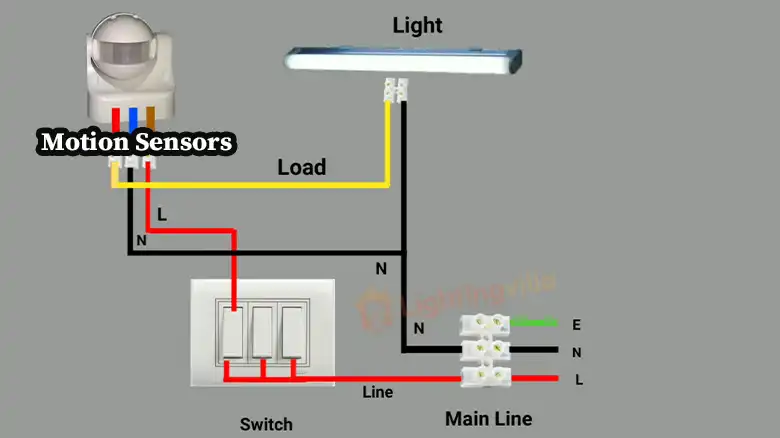Can You Wire Two Motion Sensors to The Same Light?
If you install a motion sensor connected to a light, your home will appear more welcoming to visitors or intruders. If the area you wish to illuminate has two approaches, rig a pair of sensors to cover both. Motion sensors are not omnipresent – they are directional, so they can only be some-seeing.
You can point them at a specific area to have them cover that area. In any other case, they would constantly trigger. You can wire two motion sensors to the same light but cannot connect them. Otherwise, both would have to activate the light. It is possible to wire the sensors separately in parallel circuits, and they will work independently.

Is it Possible to Wire Two Motion Sensors to The Same Light?
Wiring two motion sensors to the same light is possible if you wire them correctly. There is much value in this. Using indoor sensors, you can have the staircase lighting switch on when you approach them from either floor using motion sensors at either end.
If you have motion sensors in front and back of your home, you can wire all your lights to them. You can have more coverage without doubling up on lights if you use your outdoor lights to deter potential intruders. There is no limit to how many sensors you can have on a light, which is useful if you have a large garden and want to cover more than two directions. Please take a look at their wiring a little more closely.

Step 1. Need to Know the Basics
Light switches are more than fancy motion sensors for turning on lights. The majority of motion-sensing devices come with four components:
- A motion sensor (many have a sensitivity adjustment to limit how far they can be reached),
- Motion sensors usually have a timer that starts when the sensor is activated (many have a timer that can be adjusted to adjust how long the light remains lit),
- A photocell that turns off the switch during daylight,
- And an override function that lets you turn on the light with a conventional switch or disable the motion sensor.

Step 2. Choosing the Right Sensor
There are several ways in which motion sensors work. Some use lights and photocells. Others use ultrasonic signals or detect heat coming off a human body to make miniature radar systems. You should check out the types available before choosing which type is best for the application you are planning. Incandescent lights are more likely to work with sensors than fluorescent fixtures. Check for compatibility if you plan to use them to operate fluorescent lights.
Step 3. The Setup
In most cases, setting up a system is straightforward. Cover the areas where you want the sensors to detect motion and activate.
- An existing electrical circuit or panel can provide power to the system.
- A conventional light switch overrides the motion switches, if necessary, from the power source.
- A wire must be run from the conventional switch to each motion sensor and from each motion sensor to the light fixture.
- Be sure to follow the installation diagrams that come with the sensors or consult an electrician.

Step 4. Adjustment
By Waiting until it is dark or covering the photocell receptor to make it appear dark, test and adjust the sensors’ aiming and sensitivity. If both sensors are activated simultaneously, the light’s timing will be controlled by the timer on the sensor that was activated last.
Frequently Asked Questions
Do Motion Sensors Interfere with Each Other?
In a room with multiple motion detectors, their active cones can interfere with one another. It is sometimes helpful to isolate the detector from ambient vibrations. When using a detector on something like a ramp, you can place a paper towel underneath.
Can You Put 2 Motion Sensors on a Three Way Switch?
Use one sensor and one standard 3-way switch when using a 3-way application. In 4-way applications or with another sensor, it is not suitable. Consult an electrician if you need clarification on any part of these instructions.
Can You Add a Motion Sensor to An Existing Light?
Don’t worry if you purchased lights without a motion sensor. Adding motion to existing outdoor lights is possible. You can even add motion detection without wiring.
Conclusion
There is no problem wiring multiple motion sensors onto one circuit, but they must be connected in parallel. It isn’t helpful to wire them in series; if you did, you would have only one sensor. With multiple motion sensors wired in parallel, your lights will always turn on when you need them, not only when you pass a certain spot where one sensor is placed.






